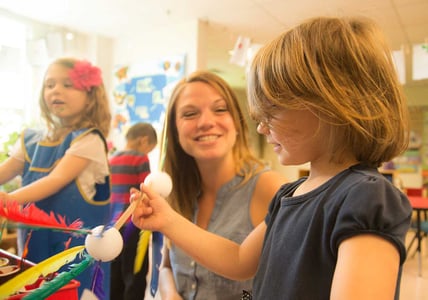
Have you ever thought that the CLASS tool seemed subjective? Perhaps you’ve coded with another certified observer and come up with very different scores for the same classroom? Maybe you’ve struggled with the reliability test or CLASS Calibration and felt that it was due to you seeing the classroom in a different light or interpreting certain situations differently? You’re not alone. Many observers have been there.
CLASS Is Objective
The truth of the matter is that the CLASS tool is an objective measure, not a subjective one. Here’s why. As observers, we’re not capturing our opinions, ideas, or thoughts about a classroom. Sorry, there’s not much room for RSP here. Our mission is to collect empirical evidence about the classroom, and we do this by looking for and noting specific, behavioral teacher-child interactions as defined by the CLASS.
The objective nature of the CLASS tool is what enables certified observers to identify the same interactions and score them similarly. However, as with anything involving human measurement, there is always going to be some degree of error. Although we can’t eliminate the error completely, we can decrease it by maintaining our certification, calibrating, and scoring on “typical” days in the classroom and on days in which we feel our best (we’re well-rested, not ill, not preoccupied with a personal issue, etc.). We can also put forth an intentional effort to remain objective by resisting the temptation to make exceptions (“the teacher did all she could with that lesson”) and being careful not to develop initial impressions about the classroom and look for evidence to confirm these.
Subjective vs. Inferential
It’s also important to note the difference between subjective and inferential. As mentioned earlier, the CLASS tool is not subjective because it is not about the opinions, ideas, or thoughts of the observer. It is inferential, though, in that it requires us to deduce scores by interpreting what we’ve seen in the classroom.
This is why the CLASS can be a difficult tool to master. It’s not about something you can count, like the number of books in the reading area or something for which you can check a yes/no box, like whether or not the teacher wears gloves when passing out snack. It’s about human interactions and behaviors, which are nuanced and often complicated.
As CLASS observers, our job is to note the interactions we see in the classroom and then interpret them. To do this, we need to ask ourselves questions about the interactions, such as “How effective was that feedback loop in helping the child reach a deeper level of understanding?” or “Was the issue resolved after the teacher stepped in to address it?” The key, though, is to use the handy dandy CLASS Manual to help us interpret the interactions we observe rather than trying to do the interpretation on our own. This will allow us to maintain objectivity and the integrity of the tool.

